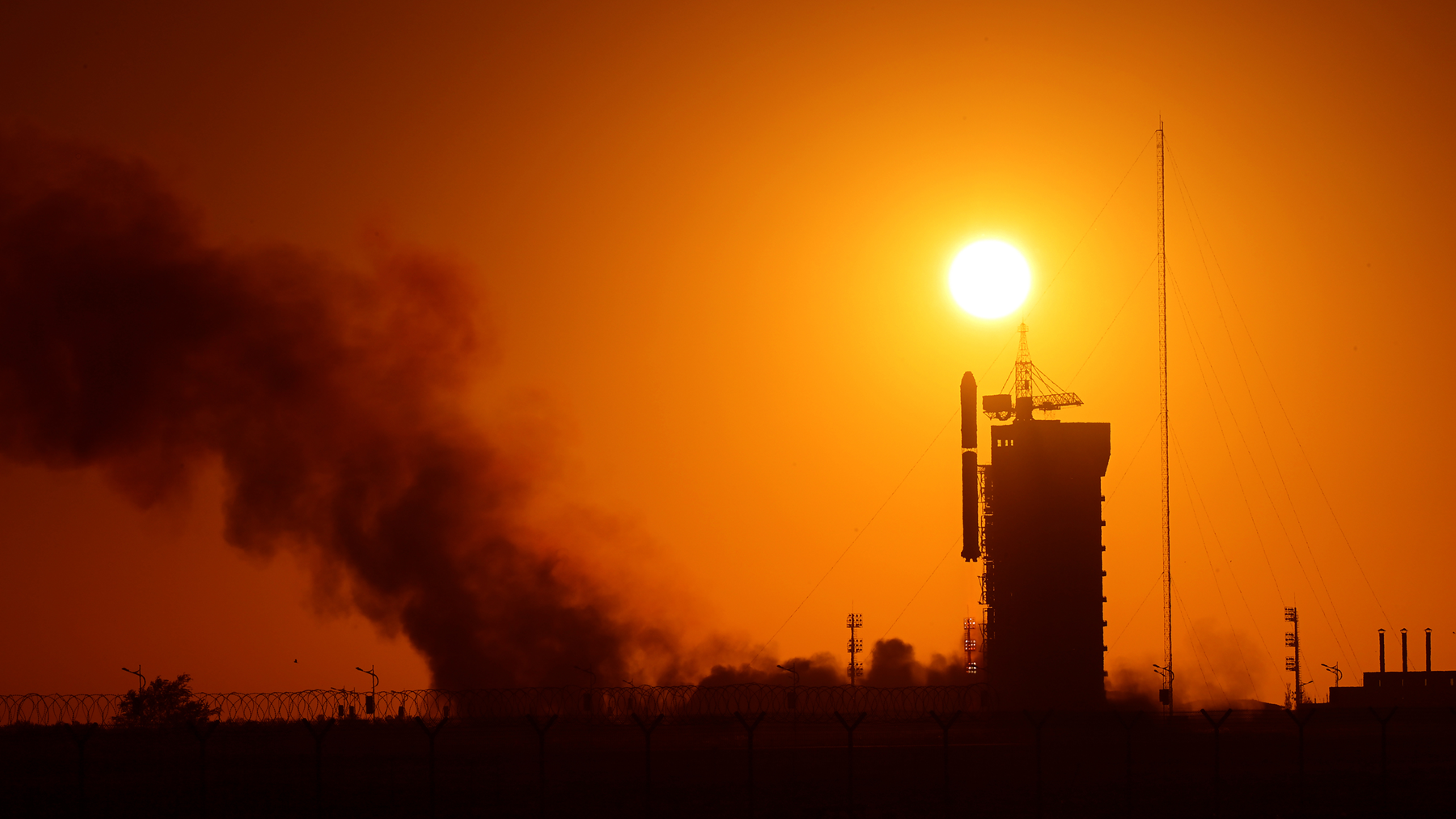
China launches its first comprehensive solar probe, the Advanced Space-based Solar Observatory (ASO-S), atop a Long March-2D carrier rocket from northwest China's Jiuquan Satellite Launch Center at 7:43 a.m. Beijing Time, October 9, 2022. Wang Jiangbo/China Media Group
China launches its first comprehensive solar probe, the Advanced Space-based Solar Observatory (ASO-S), atop a Long March-2D carrier rocket from northwest China's Jiuquan Satellite Launch Center at 7:43 a.m. Beijing Time, October 9, 2022. Wang Jiangbo/China Media Group
China's first comprehensive solar probe, the Advanced Space-based Solar Observatory (ASO-S), was launched into space aboard a Long March-2D carrier rocket from the Jiuquan Satellite Launch Center in northwest China on Sunday.
The probe, nicknamed Kuafu-1, will operate in orbit 720 kilometers from Earth, permanently facing the sun.
While the sun is not physically explorable with current technology, dozens of solar observation probes operating in heliocentric orbit or at one of the Earth-sun Lagrangian points have been launched, mostly by the U.S. and the European Union, since the 1960s.
Why is Kuafu-1 necessary?
In 2018, NASA launched solar probe Parker, the first-ever mission to "touch" the sun. The small car-sized spacecraft travels directly through the sun's atmosphere ultimately to a distance of about 4 million miles (6.4 million kilometers) from the surface to make observations of the star's outer corona.
"It (Parker) is very close to the sun, which also means that it will receive very strong thermal radiation and cannot conduct direct imaging observations of the sun. Therefore, Parker can only do local detection of the solar environment such as particles, magnetic fields and solar wind in the solar atmosphere," Gan Weiqun, Kuafu-1's principal scientist from the Purple Mountain Observatory (PMO) under the Chinese Academy of Sciences (CAS), was quoted as saying by China News Service on Sunday.
Kuafu-1 can directly "look" at the sun, observe the sun by means of telemetry and remote sensing, and thus image the sun, Gan said.
Given their different scientific goals, Kuafu-1 and Parker are complementary to each other, he said.
Compared with another Chinese-launched solar probe, the Chinese H-Alpha Solar Explorer (CHASE), nicknamed Xihe in Chinese, Gan said Kuafu-1 is different terms of scientific objectives, observation objects and observation wavebands.
Xihe, launched in 2021, operates in a sun-synchronous orbit at an average altitude of 517 kilometers, with a solar Hα (H-alpha) imaging spectrometer as its main scientific payload.
Xihe functions more like an experimental satellite, which aims to technically examine a new platform with its very high pointing accuracy and high stability, Gan said.
The satellite is able to acquire an image of the full-solar Hα spectrum with high temporal resolution, observe and study chromospheric dynamics, Gan said in a separate interview with Xinhua.
Read more: China launches Kuafu-1, its first comprehensive solar probe
Kuafu-1 is a space science satellite especially proposed for solar observation and driven entirely by scientific goals, Gan said, adding that its mission is a combination of several innovations, such as the development of the solar-monitoring instrument installed on the satellite, China News Service reported.
It is the world's first near-Earth satellite telescope to simultaneously monitor solar flares, coronal mass ejections and the sun's magnetic field, he said.
After four to six months of testing, the 859-kg satellite will start normal operation and its data will be open to researchers within related domains based on international standards, Li Hui, chief designer of the Kuafu-1 said.